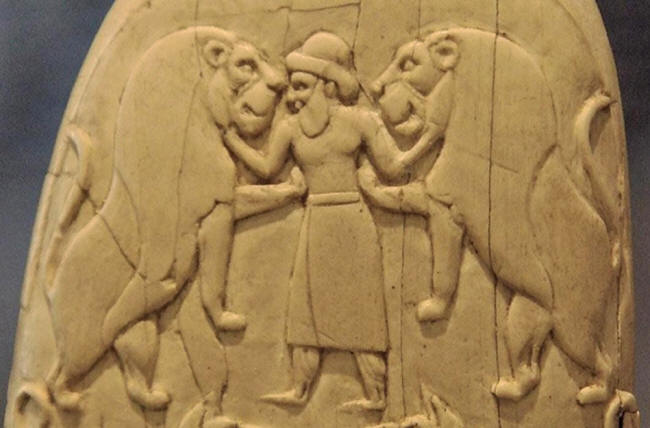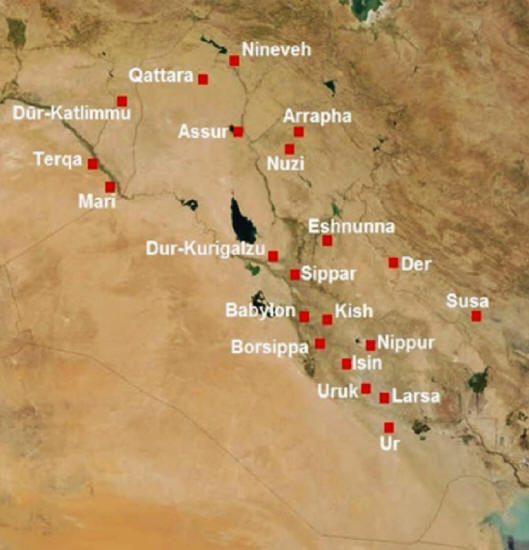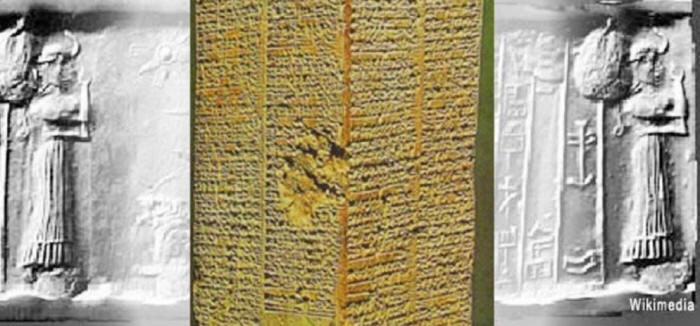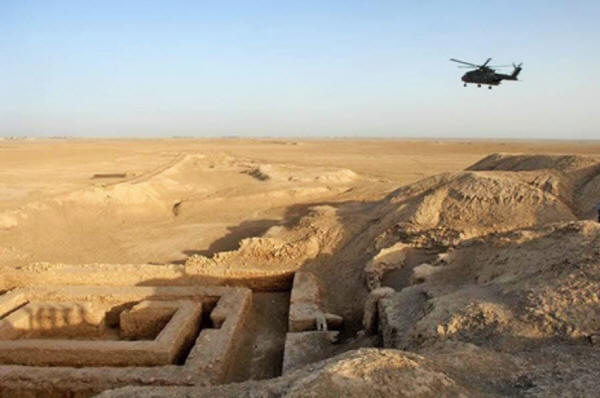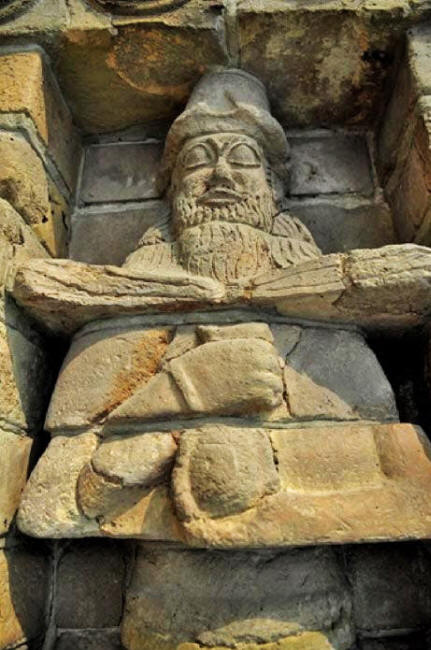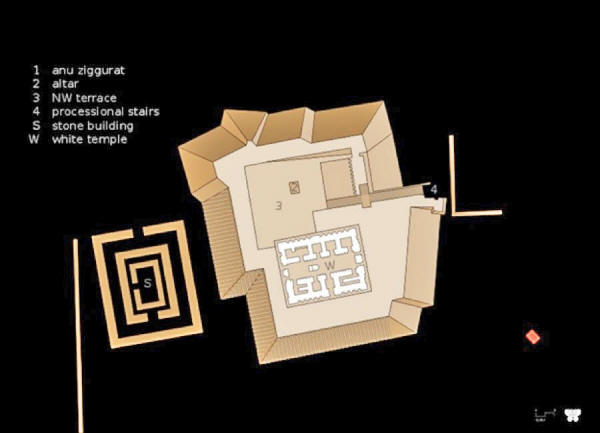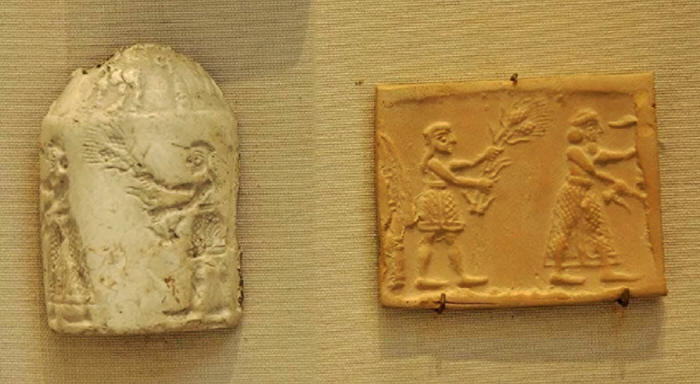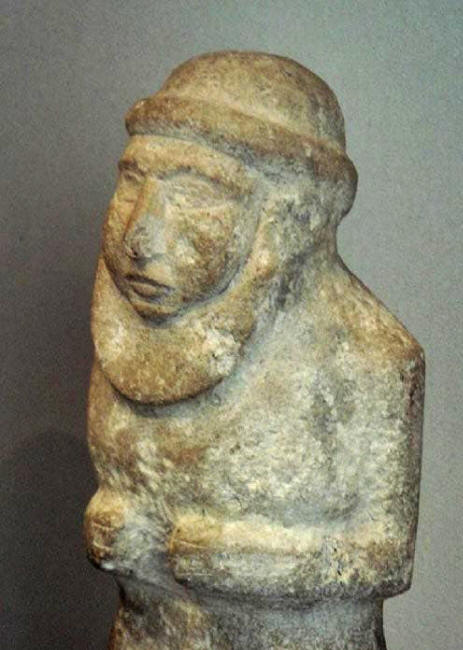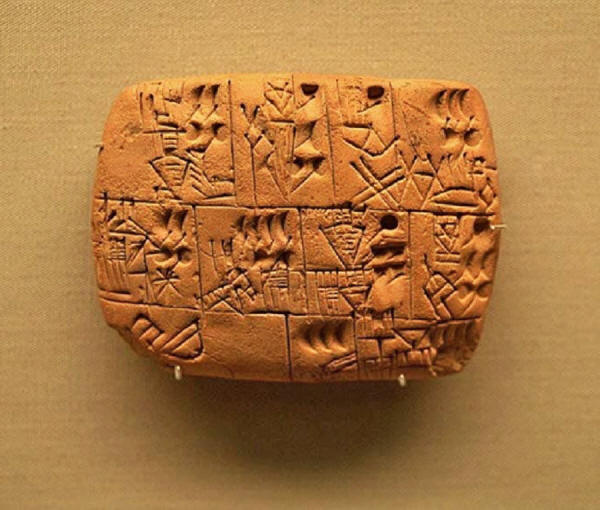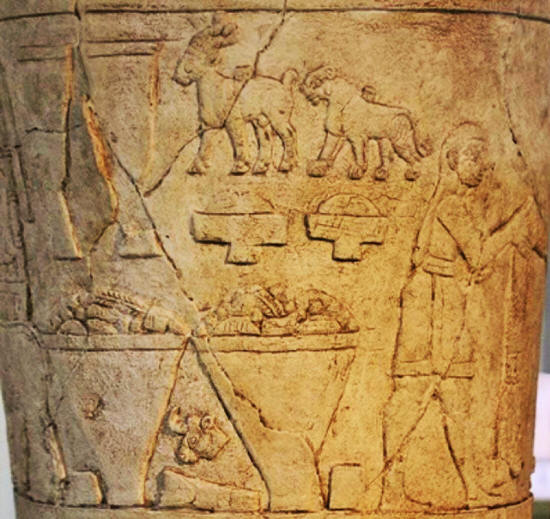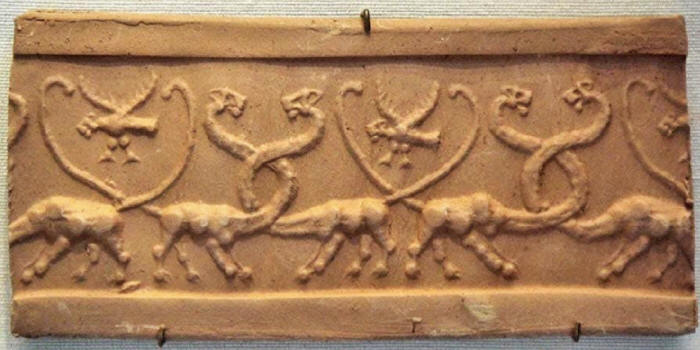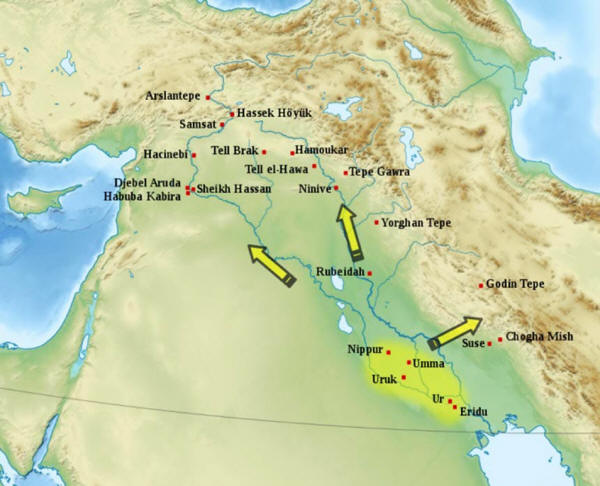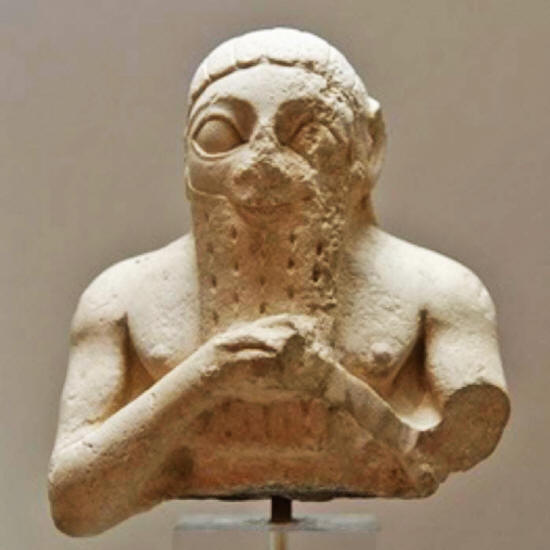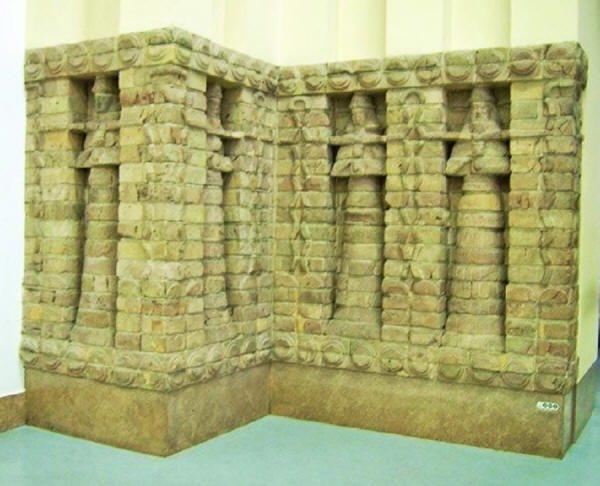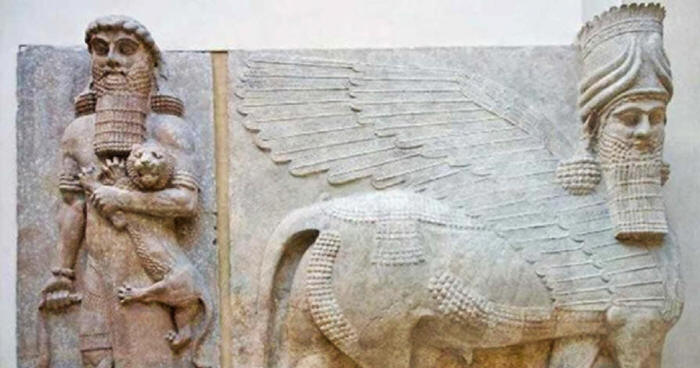|
by Willem McLoud from AncientOriginsUnleashed Website
as Master of Animals on the Gebel el-Arak Knife, dated circa 3300-3200 BC, Abydos, Egypt.
(CC
BY-SA 2.0)
For the Sumerians, this
House of Uruk was not just another royal house, for them it was one
of the greatest Sumerian dynasties ever to have ruled over Sumer, if
not the greatest.
A map of Mesopotamia in 2nd millennium BC, showing Uruk.
(CC BY-SA 2.5)
For the ancients, this superhuman descent was visible in the great and mighty deeds done by heroes, mighty men like,
Deeds reflected in the
great monuments attributed to them, dated to the Uruk Period (c.
3800-2850 BC), to this very day confirming the fact that the House
of Uruk yielded one of the most remarkable and outstanding epochs in
ancient Mesopotamian history.
Stone tablet inscribed with the Sumerian King List. (Public Domain)
As most of the kings of
this dynasty ruled before phonetic writing was discovered allowing
for the documentation of royal reigns, there can be no doubt that
the King List only comprises those kings remembered in the oral
tradition.
He was both high priest and king:
Uruk Archaealogical site at Warka, Iraq
(Public Domain)
This, however, does not reveal much about the exact time they ruled over the land of Sumer since the King List was first compiled much later.
The compiler of this list did not know how the reigns of the early dynasties were related to one another and merely wrote them down one beneath the other, leaving the wrong impression that Sumerian history happened in that order.
He also accorded the great rulers reigns of hundreds of years, which is unfortunately difficult to interpret.
Facade of Inanna Temple at Uruk, Iraq. 15th century BC. The Pergamon Museum (Osama Shukir Muhammed Amin FRCP/ CC BY-SA 4.0)
There is a remarkably consistent agreement between the literary traditions and the archaeological finds made in that ancient land.
Thus one can figure out that this family came to Sumer right at the start of the so-called Uruk Period when the great city of Uruk was first built.
This is in line with the
textual tradition, according to which Meskiagkasher became king at
E-anna, 'house' or temple of An, and his son, Enmerkar, built
the city of Uruk on this site.
Various scholars have argued this is where the great flood of Sumerian and ancient Middle Eastern tradition fits into their history, a deluge remembered as an extraordinary and very drastic event in Sumer's past.
Archaeologists also found
evidence of this flood at places like
Uruk,
Eridu and elsewhere in the area.
Anu District Phase E of Uruk III
(CC BY-SA 3.0)
In the immediate period after the flood many people came as new settlers to the vicinity of the An temple.
This agrees with the stories about Meskiagkasher, founder of the first House of Uruk, who is said to have come to that area in the time before the city of Uruk was built there.
According to the stories told about this family, they came to Sumer,
Their stories were told and retold by bards throughout Sumerian history until they were eventually written down in the Ur III period at the end of the third millennium BC.
A.R. George writes:
Four Sumerian poems telling about the exploits of the heroes Enmerkar and Lugalbanda exist.
They focus on the conflict between Sumer and Aratta and are called the Matter of Aratta. Together with the stories about Gilgamesh they form the Gesta Urukaeorum, the legends of the kings of Uruk.
These legends provide the
basic literary corpus about the lives of those legendary kings.
Cylinder-seal of the Uruk period and its impression. (c.3100 BC.) Louvre Museum. (Public Domain)
Some markers for the location of this land do fortunately exist.
In one of the stories about Enmerkar, Enmerkar and the Lord of Aratta, the land of Aratta was reached through seven mountain passes from Sumer in the south:
These seven mountain passes were well known in ancient times and many years later the Assyrian king, Sargon II, also travelled through them to battle against Urartu, seemingly the later form of the name Aratta.
When he arrived at his destination just south of Lake Urmia in the far northwestern parts of present-day Iran, he crossed the Aratta River.
This is the only geographical landmark in later literature pertaining to this land.
Portrait of a probable Uruk King-Priest with a brimmed round hat and large beard, excavated in Uruk and dated to 3300 BC. Louvre Museum. (CC BY-SA 2.0)
To accomplish this task, he asked the ruler of Aratta to send him builders and metalworkers to help not only to build this city but also to rebuild Eridu's temple.
In this early period, Sumer did not have these skills and all the metals, precious stones and building materials, such as limestone and wood, had to be imported from the north.
This request is described at length in Enmerkar and the Lord of Aratta.
At that time, a large part of the land comprised marches that had to be drained for the land to be reclaimed. In time, Uruk became a mighty city, the only such city in Sumer during the Uruk Period, stretching over 250 hectares with about 10- to 50 000 inhabitants.
Great buildings and temples adorned the city. Enmerkar is also remembered for other inventions.
According to Sumerian tradition, he was the first to have:
Tablet from Uruk, dating to Uruk III (c. 3200–3000 BC) recording distributions of beer from the storerooms of an institution B ritish Museum. (CC BY-SA 2.0)
The earliest writing from the Uruk Period was, in fact, not done with a stylus as in later times but with a pointed instrument, making pictographic symbols not looking as formal as in later times.
At first, they merely used these for accounting purposes and only towards the end of the Uruk Period were these symbols read phonetically for the very first time.
Devotional scene to Inanna, Warka Vase. (c. 3200–3000 BC) Uruk. This is one of the earliest surviving works of narrative relief sculpture. (Miguel Hermoso Cuesta/ CC BY-SA 4.0)
He also brought the worship of the goddess Inanna from Aratta to the temple of An, where Uruk was later built.
The name Lugalbanda means 'little king'. Lugalbanda's story is told in two parts, namely Lugalbanda in the Mountain Cave and Lugalbanda and the Thunderbird.
The first part tells how King Enmerkar devised a campaign against the land of Aratta in the north.
He called the people up
to arms and placed them under the command of eight warrior-leaders,
namely Lugalbanda together with seven other young men.
According to this story, this experience led to him being reckoned as part of the Anzu-bird's family. According to tradition, Lugalbanda played an important role in establishing the Anzu as a cult symbol in ancient Sumer.
The first depictions of
this lion-headed eagle, do, in fact, date back to the Uruk Period.
Clay impression of a cylinder seal with monstrous lions and lion-headed eagles, Mesopotamia, Uruk Period (4100 BC–3000 BC). Louvre Museum. (PHGCOM/CC BY-SA 4.0)
This is confirmed by history.
For the first time during
the last phase of the Uruk Period, one finds fortified structures
on the plains as well as the highlands from where garrisons
could control large areas, and one also finds depictions of war in
art as well as deposits of weapons were found in Uruk and
surrounding areas.
Uruk expansion and colonial outposts. (c. 3600-3200 BC) (CC BY-SA 3.0)
Uruk enclaves were
established up along the headwaters of the Tigris and Euphrates
rivers, all the way to the Taurus mountains in the northwest and the
Zagros mountains in the northeast.
Lugal-kisal-si, king of Uruk (Public Domain)
There are, however, no great epics telling the story of this king and he was remembered more in cultic tradition.
He was a tragic figure who died as a young man during the 'festival of young men' (war), more specifically, during a rebellion when the cities surrounding Uruk apparently rose up against its rule over them.
Evidence indicates this happened at the end of the Uruk Period, or the Uruk IV Period.
Depictions on seals and
other items show prisoners with their hands fastened behind their
backs, being pushed by guards to the ground with spears and clubs.
Part the front of the Inanna temple of the Kara Indasch from Uruk. (CC BY-SA 3.0)
With Dumuzi's death, the rule of the first Dynasty of Uruk came to an end.
Now, another city rose to prominence, namely Kish, where Enmebarragesi became king.
He is the very first
Sumerian ruler whose inscriptions were found, done in a very early
style of writing, using straight lines instead of the typical nail
type cuneiform that came into use later.
Gilgamesh and a human-headed winged bull Khorsabad facing. Louvre (Public Domain)
For some reason - possibly related to the events surrounding Dumuzi's death - he took shelter at the court of Enmebarragesi's son Akka.
One reads in Gilgamesh and Akka that Akka appointed Gilgamesh as governor of Uruk. The young men of the city, however, incited Gilgamesh to lead an uprising against the yoke of Kish.
During the ensuing battle
with Akka, Gilgamesh came out victorious and subsequently became the
king of Uruk.
The foundations of the wall were made from burnt brick whereas the walls themselves were constructed from plano-convex bricks. The walls were seven meters high (23 feet) and nine kilometers (5.6 miles) long and incorporated high towers and strong gates.
In keeping with tradition, it dates back to the time directly after the final phase of the Uruk Period (Uruk IV), from the Jemdet Nasr Period.
Rulers from this dynasty such as,
...were awarded a unique
place in Sumerian history - they were remembered as unmatched heroes
from an age which had no equal in later history.
His migration to the An temple area before the city of Uruk was built there is in line with archaeological evidence about such a settlement at the start of the Uruk Period.
One can surmise that the
stories of these great heroes might have been based on those of true
historical persons who ruled during that time - persons of whom one
has no physical evidence that they lived except the great epic
tradition their poets left as their legacy...
|


